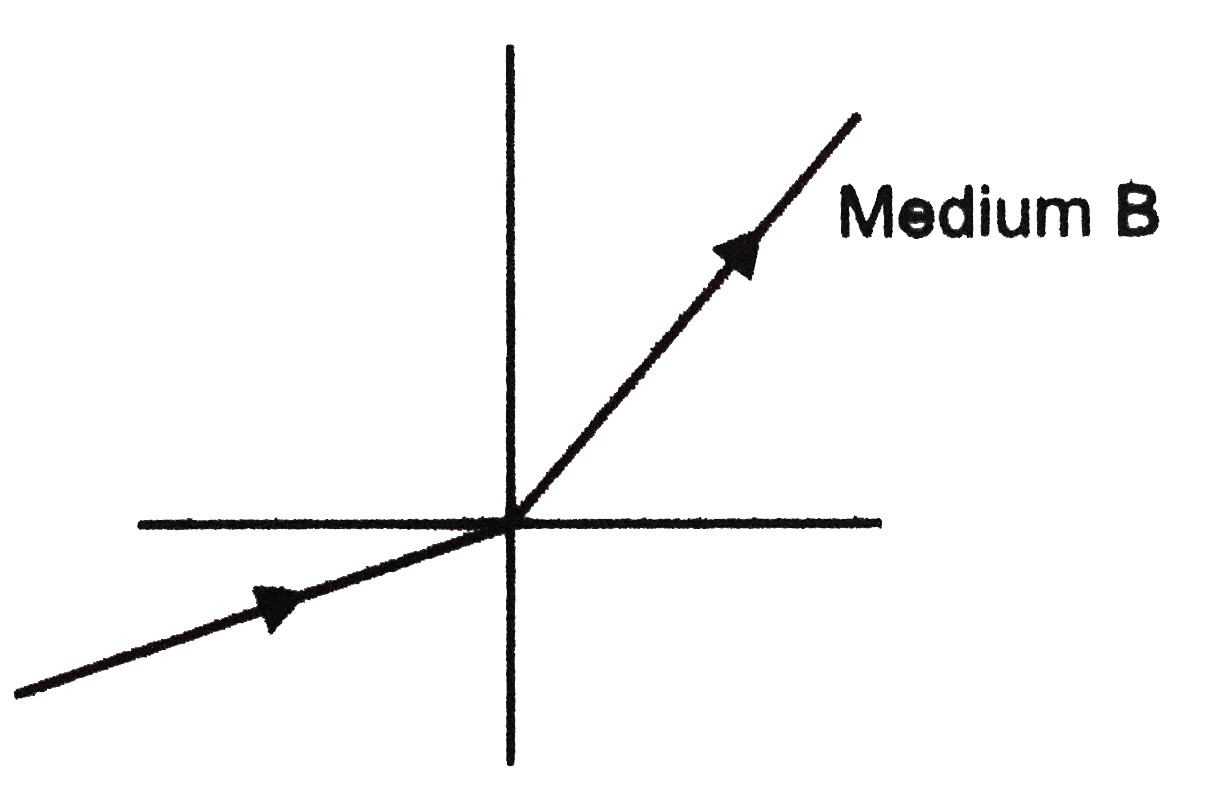Most material have the refractive index, n>1. So, when a light ray from air enters a naturally occurring meterial, then by Snell's
law,sinθ1sinθ2=n2n1, it is understood that the refrected ray bends
towards the normal. But it never emerges on the same side of the normal as the incident ray. According to electromagnetism, the refractive index of the medium is given by the relation,
(cv)=±√ɛrμr , Where c is the speed of electromagnetic wave in vacuum, v its speed in the medium, ɛr and μrare the relative permittivity and permeability of the medium respectively. In normal materials, both ɛr and μr are positive implaying positive n for the medium. When both ɛr and μr are negative, one must choose the negative root of n. Such negative refraction index material can now be artificially prepared and are called meta-materials. They exhibit significanatly different optical behaviour, without violating any physical laws. Since n is negative, it result in a change in the directionof proportion of the refracted light. However, similar to normal materials, the frequency of light remains unchanged upon refractive even in meta-material.
Choose the correct statement.
The speed of light in the meta-material is v=c|n|
The speed of light in the meta-material is vc|n|
The speed of light in the meta-material is v=c.
the waveleght of light in the meta-material (λm) is given by λm=λair|n|, where λair is the wavelength of the light in air.
The correct Answer is:C
n=cv
for metamaterials
v=c|n|
Topper's Solved these Questions
- BOOK - RESONANCE ENGLISHCHAPTER - GEOMATRICAL OPTICS EXERCISE - Advance level Problems35videos
GEOMATRICAL OPTICS
- BOOK - RESONANCE ENGLISHCHAPTER - GEOMATRICAL OPTICS EXERCISE - Exercise-262videos
GEOMATRICAL OPTICS
- BOOK - RESONANCE ENGLISHCHAPTER - EXPERIMENTAL PHYSICSEXERCISE - PART -II10videos
EXPERIMENTAL PHYSICS
- BOOK - RESONANCE ENGLISHCHAPTER - GRAVITATIONEXERCISE - HIGH LEVEL PROBLEMS16videos
GRAVITATION
Similar Questions
Most materials have the refractive index, n>1. So, when a light ray from air enters a naturally occuring material, then by Snell's law, sinθ1sinθ2=n1n2, it is understood that the refracted ray bends towards the normal. But it never emerges on the same side of the normal as the incident ray. According to electromagnetism, the refractive index of the medium is given by the relation, n=(c/v)=±√εr,μr, where c is the speed of the electromagnetic waves in vacuum, v its speed in the medium, εr and μr are negative, one must choose the negative root of n. Such negative refractive index materials can now be artifically prepared and are called meta-materials. They exhibit significantly different optical behaviour, without violating any physical laws. Since n is negative, it results in a change in the direction of propagation of the refracted light. However, similar to normal materials, the frequency of light remains unchanged upon refraction even in meta-materials.
Answer the following questions :
For light incident from air on a meta-material, the appropriate ray diagram isView SolutionMost materials have the refractive index, n>1. So, when a light ray from air enters a naturally occuring material, then by Snell's law, sinθ1sinθ2=n1n2, it is understood that the refracted ray bends towards the normal. But it never emerges on the same side of the normal as the incident ray. According to electromagnetism, the refractive index of the medium is given by the relation, n=(c/v)=±√εr,μr, where c is the speed of the electromagnetic waves in vacuum, v its speed in the medium, εr and μr are negative, one must choose the negative root of n. Such negative refractive index materials can now be artifically prepared and are called meta-materials. They exhibit significantly different optical behaviour, without violating any physical laws. Since n is negative, it results in a change in the direction of propagation of the refracted light. However, similar to normal materials, the frequency of light remains unchanged upon refraction even in meta-materials.
Answer the following questions :
Choose the correct statement.View SolutionA ray of light incidents on a refracting surface at 30∘ with the surface . If the angle of refraction is 45∘ refractive index of the medium is
View SolutionWhen a ray of light is incident normally on one refracting surface of an equilateral prism (Refractive index of the material of the prism =1.5
View SolutionWhen a ray of light is incident normally on one refracting surface of an equilateral prism (Refractive index of the material of the prism =1.5)
View SolutionWhen light rays enter the eye, most of the refraction occurs at the
View SolutionA unit vector along the incident ray of light is ˆi. The unit vector for the corresponding refracted ray of light is ˆr.ˆn, a unit vector normal to the boundary of the medium and directed towards the incident medium. If μ is the refractive index of the medium, then snell's law (second law) of refraction is
View SolutionA ray of light is incident normally on one face of an equilateral prism of refractive index 1.5. The angle of deviation is: (Given sin−1.23=42∘)
View SolutionA light ray is normally incident onone face of equilateral glass prism of refractive index √2. The deviation of light ray is
View SolutionA light ray enters from medium A to medium B as shown in Figure. The refractive index of medium A relative to B will be
 View Solution
View Solution

